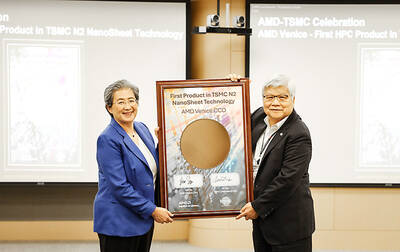Law firms, beloved islands of security and stability to their employees, are proving vulnerable to the turbulence in the current economy.
Squeezed by their clients and their own lawyers in tough times, some firms are collapsing under the pressure. Big corporate clients are battling to keep costs down, while the firms' costs are rising, from lawyers, staff and technology. Partners, meanwhile, are often unwilling to accept declining pay and so defect.
"There are more firms working on radically restructuring," said Lisa Smith, who leads the merger and consolidation practice at consulting firm Hildebrandt International. She said her business is busier than ever advising law firms trying to avoid collapse, adding that there have been a number of desperate, last-ditch efforts at mergers recently to stave off law firm implosions. "We're seeing a rash of them right now."
The most spectacular collapse came last week, when partners of Brobeck, Phleger & Harrison decided to wind down the prominent Bay Area firm. On Monday, Skjerven Morrill, a 67-lawyer San Jose, Calif., firm specializing in intellectual property law, announced that it would dissolve.
In December, the venerable Hill & Barlow, a 107-year-old Boston law firm, announced that it would dissolve after a group of real estate partners said they planned to defect.
Gradual changes in the practice of law have made law firms more vulnerable today than they have been in years, according to lawyers and their consultants. This is not the first time that lucrative work for big companies and investment banks has dried up. But many firms have become very specialized, so they do not have the bankruptcy business to carry them.
The firms' problems generally become evident early in the year as partners learn how much money they made in the previous year and how much they will probably make in the coming year. If both numbers are in decline, some partners invariably begin to look for greener pastures; several partners jumped ship from Brobeck over the last year after hearing the prognosis for 2002, for example.
"They'll jump for money," said Ward Bower, a principal at Altman Weil, a consulting firm that advises law firms. "Twenty years ago they wouldn't. That injects volatility into the marketplace."
At Hill & Barlow, a group of real-estate lawyers announced their intention to join another firm, said Robert A. Bertsche, a former partner at the firm. "There have been times when one department has been stronger and another department has been weaker," he said, but partners would remain loyal. "They were different times. And maybe they were different people."
When partners do defect, the firm still faces lease costs and personnel costs but fewer lawyers to bring in revenue, squeezing profits, Bower said. The weak economy has the same effect, driving down partner compensation and leading more partners to abandon ship, Bower said.
Firms that relied heavily on slipping sectors of the economy -- technology companies, in Brobeck's case -- ?have found the climate particularly harsh. Brobeck shed nearly a third of its lawyers last year, before deciding to shut down last week.
Conventional wisdom held that law firms could weather economic downturns by relying on business lines like bankruptcy and civil litigation that tend to boom in bad times. But in the late 1990s, not all firms kept their staff or their clientele balanced, leaving them without bankruptcy lawyers to subsidize those stock offering gurus who are now underutilized.
"The countercylical practices for the most part are not evenly distributed," Bower said. Firms with big bankruptcy practices, like New York's Weil, Gotshal & Manges -- ? which is representing Enron, among others -- ?are very busy, but other firms with little bankruptcy expertise are experiencing a tough year, he said.
Law firms carry more debt today as well. Brobeck, for example, had tens of millions in debt, and that was a significant factor in the decision to wind down, partners said last week.

TAKING STOCK: A Taiwanese cookware firm in Vietnam urged customers to assess inventory or place orders early so shipments can reach the US while tariffs are paused Taiwanese businesses in Vietnam are exploring alternatives after the White House imposed a 46 percent import duty on Vietnamese goods, following US President Donald Trump’s announcement of “reciprocal” tariffs on the US’ trading partners. Lo Shih-liang (羅世良), chairman of Brico Industry Co (裕茂工業), a Taiwanese company that manufactures cast iron cookware and stove components in Vietnam, said that more than 40 percent of his business was tied to the US market, describing the constant US policy shifts as an emotional roller coaster. “I work during the day and stay up all night watching the news. I’ve been following US news until 3am

UNCERTAINTY: Innolux activated a stringent supply chain management mechanism, as it did during the COVID-19 pandemic, to ensure optimal inventory levels for customers Flat-panel display makers AUO Corp (友達) and Innolux Corp (群創) yesterday said that about 12 to 20 percent of their display business is at risk of potential US tariffs and that they would relocate production or shipment destinations to mitigate the levies’ effects. US tariffs would have a direct impact of US$200 million on AUO’s revenue, company chairman Paul Peng (彭雙浪) told reporters on the sidelines of the Touch Taiwan trade show in Taipei yesterday. That would make up about 12 percent of the company’s overall revenue. To cope with the tariff uncertainty, AUO plans to allocate its production to manufacturing facilities in

Six years ago, LVMH’s billionaire CEO Bernard Arnault and US President Donald Trump cut the blue ribbon on a factory in rural Texas that would make designer handbags for Louis Vuitton, one of the world’s best-known luxury brands. However, since the high-profile opening, the factory has faced a host of problems limiting production, 11 former Louis Vuitton employees said. The site has consistently ranked among the worst-performing for Louis Vuitton globally, “significantly” underperforming other facilities, said three former Louis Vuitton workers and a senior industry source, who cited internal rankings shared with staff. The plant’s problems — which have not

COLLABORATION: Given Taiwan’s key position in global supply chains, the US firm is discussing strategies with local partners and clients to deal with global uncertainties Advanced Micro Devices Inc (AMD) yesterday said it is meeting with local ecosystem partners, including Taiwan Semiconductor Manufacturing Co (TSMC, 台積電), to discuss strategies, including long-term manufacturing, to navigate uncertainties such as US tariffs, as Taiwan occupies an important position in global supply chains. AMD chief executive officer Lisa Su (蘇姿丰) told reporters that Taiwan is an important part of the chip designer’s ecosystem and she is discussing with partners and customers in Taiwan to forge strong collaborations on different areas during this critical period. AMD has just become the first artificial-intelligence (AI) server chip customer of TSMC to utilize its advanced